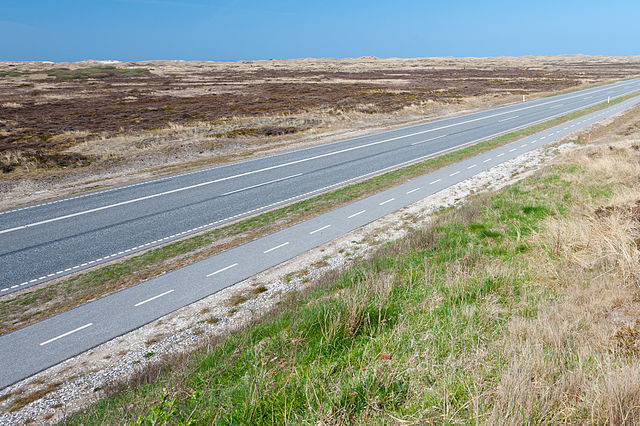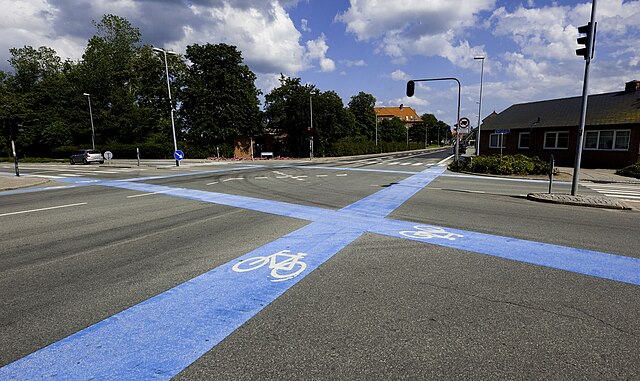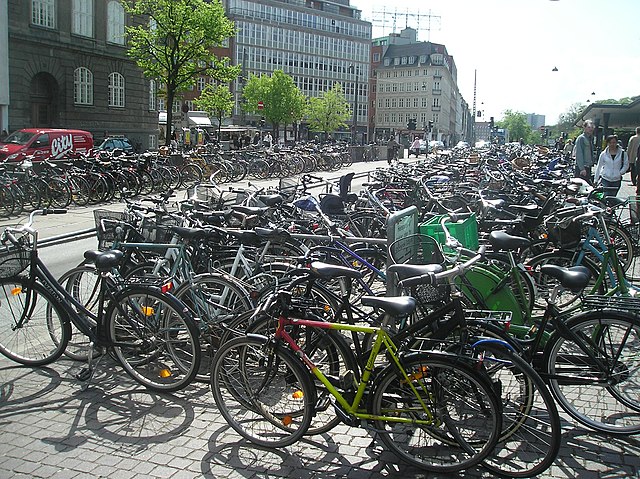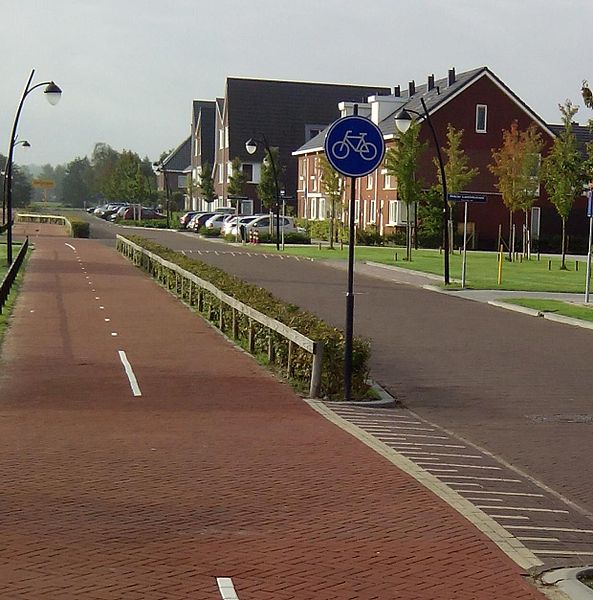Cycling in Denmark is both a common and popular recreational and utilitarian activity. Bicycling infrastructure is a dominant feature of both city and countryside infrastructure with segregated dedicated bicycle paths and lanes in many places and the network of 11 Danish National Cycle Routes extends more than 12,000 kilometres (7,500 mi) nationwide. Often bicycling and bicycle culture in Denmark is compared to the Netherlands as a bicycle-nation.
The bicycle path between Skagen and Frederikshavn is very popular with tourists. Here it runs parallel with (but clearly separated from) the road - at other places it goes through forest and dune areas.
Blue markings for cycles at an intersection
A public bicycle pump and direction signs for bicycles along a 'bicycle highway' in Copenhagen.
Available parking facilities are often inadequate in the major cities. Nørreport Station in Copenhagen.
A bike path or a cycle path is a bikeway separated from motorized traffic and dedicated to cycling or shared with pedestrians or other non-motorized users. In the US a bike path sometimes encompasses shared use paths, "multi-use path", or "Class III bikeway" is a paved path that has been designated for use by cyclists outside the right of way of a public road. It may or may not have a center divider or stripe to prevent head-on collisions. In the UK, a shared-use footway or multi-use path is for use by both cyclists and pedestrians.
The Elliott Bay Trail in Seattle, Washington, USA.
This Fietspad or Bicycle Path is in the Netherlands safely linking housing.
A stretch of Ciclovia Adriatica, in Italy
Bike path transitioned from outdoor to indoor at Funan Mall in Singapore








